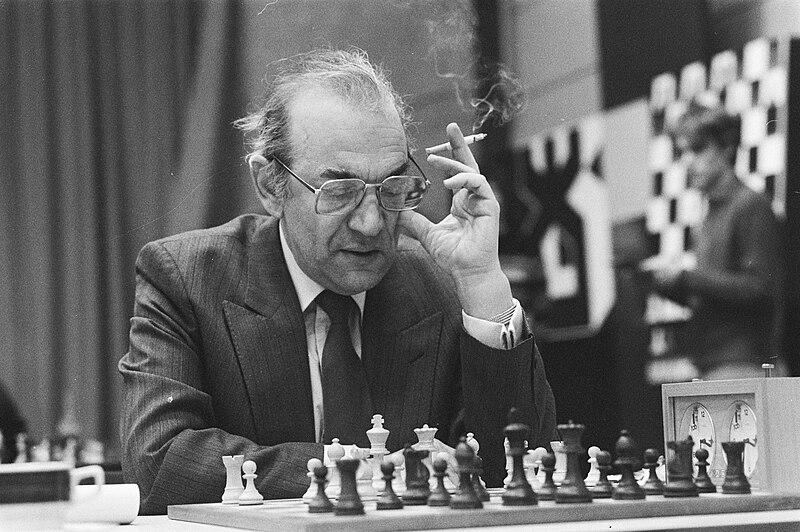
1985 saw an oddity in the chess world: Russian grandmaster Viktor Korchnoi undertook a game with Hungarian Géza Maróczy, who had been dead for 34 years. The game was arranged by amateur Swiss player Wolfgang Eisenbeiss, who enlisted medium Robert Rollans to contact the deceased grandmaster and communicate his moves. (Rollans did not play chess and was not paid.)
Closely watched in Germany, the game took nearly eight years to unfold, hampered by Korchnoi’s schedule, Rollans’ illness, and Maróczy’s unhurried pace. Korchnoi, who won after 47 moves, remarked that his opponent had shown weakness in the opening but made up for it with a strong endgame.
After an analysis in 2007, neuropsychiatrist and amateur player Vernon Neppe declared that Maróczy had played at master level and that his moves could not have been found by a computer. Further, when asked to confirm his identity, the deceased grandmaster had dictated 38 pages of text to Rollans, complaining, “I am astonished when somebody does not believe me to be here personally.” Historian and chess expert Laszlo Sebestyen determined that 87.9 percent of Maróczy’s assertions there (about his playing, tournament wins, and personal life) had been accurate.
But in a 2021 critique, Edwin C. May and Sonali Bhatt Marwaha point out that Maróczy had typically taken 10 days to make each move, during which time Rollans might easily have consulted outside assistance. And the medium had had ample time to prepare Maróczy’s 1986 communication confirming his identity. Ultimately the answers lie with Rollans, who, ironically, passed quickly out of reach — he died just 19 days after Maróczy’s resignation.
